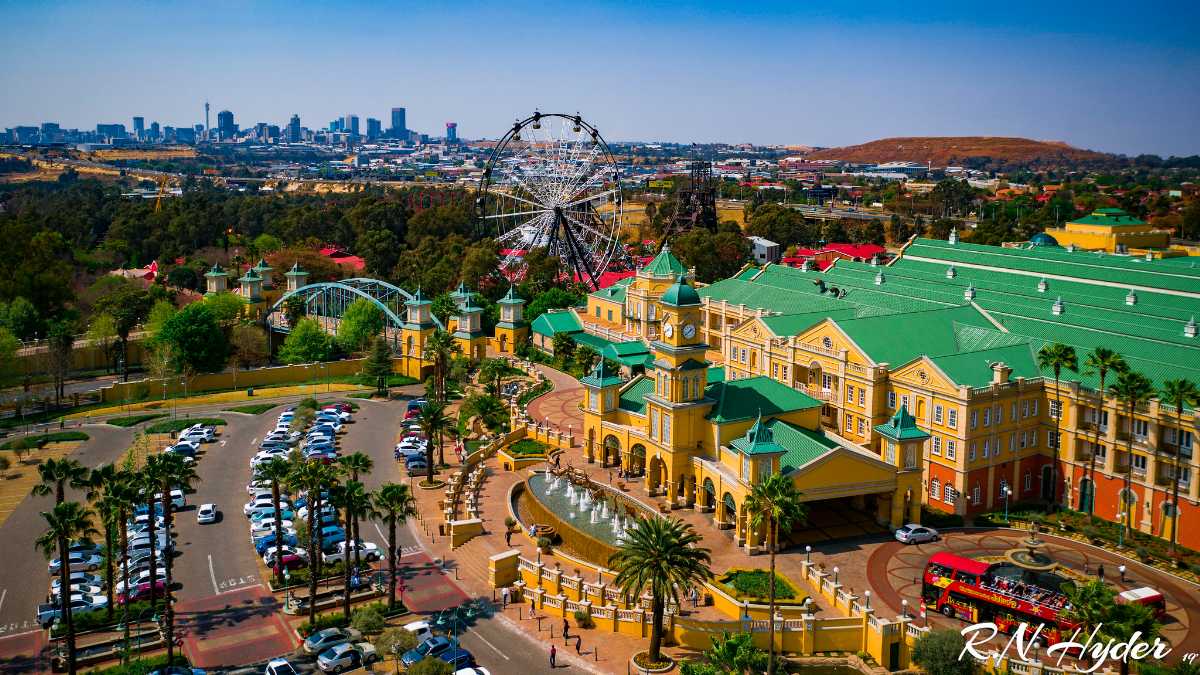Indicators on Johannesburg North Attractions You Need To Know
Table of ContentsAn Unbiased View of Johannesburg North AttractionsA Biased View of Johannesburg North AttractionsAbout Johannesburg North AttractionsSome Ideas on Johannesburg North Attractions You Should KnowJohannesburg North Attractions for BeginnersThe 15-Second Trick For Johannesburg North Attractions
The city owes its area to the presence of an even a lot more priceless source: gold. The city grew on the edge of the Witwatersrand Main Coral reef, a subterranean stratum of gold-bearing quartz-silica conglomerate that arcs for hundreds of miles beneath the Highveld. A lot of the gold mines in the city discontinued procedure in the 1970s, yet in its day the Witwatersrand gold industry made up even more than 40 percent of the world's annual gold production.Johannesburg has a pleasant environment. Summer season temperature levels balance concerning 75 F (24 C); winter months temperature levels balance concerning 55 F (13 C) and just periodically dip below cold. The city takes pleasure in concerning eight hours of sunlight daily in both winter season and summer season. Rainfall standards concerning 28 inches (700 millimetres) per year, however the total differs significantly from year to year.
What rainfall the city gets falls virtually solely in the summertime months, usually in stunning late-afternoon electrical storms., where lots of residents still count on coal for fuel.

9 Simple Techniques For Johannesburg North Attractions
The balance of the city is occupied by whites. Holiday accommodation differs in personality and quality. Soweto is infamous for its countless rows of municipally developed, two-room matchbox homes, yet it additionally has a couple of thriving enclaves in addition to brimming squatter camps, where tens of thousands live without water, electricity, or sanitation centers.
Physical growth, although rather restricted by transport, proceeded swiftly as immigration to South Africa, and Johannesburg specifically, boosted substantially. This issue was solved in the 1930s when the auto was introduced in mass manufacturing to South Africa. Cars were, essentially, constrained to the rich, and allowed them to move to the north of the city and commute right into the centre.
Many inadequate suburban areas were mixed, with inadequate blacks and whites living together, although the affluent suburban areas were typically scheduled for whites.
The previous system of eleven numbered regions was reorganised in 2006. Marshalltown, as seen from the top of the Carlton Centre. The M1 and M2 run behind the structures, and the southerly residential areas extend past the highway boundary. The central city of Johannesburg is situated within the city's Area F. The approximated populace of the area is 200,000, [] The number of individuals living in the inner city on an informal basis is unknown, as many are illegal immigrants. Many higher-income residents and white individuals have actually relocated to the northern residential areas and have actually been changed by lower-income black people. The joblessness, education and learning, and age profiles of the area are all unidentified, as a result of the problem of acquiring dependable information concerning the location.
The Main Principles Of Johannesburg North Attractions
Centred on the CBD, the region directory consists of the suburbs of Yeoville, Bellevue, Troyeville, Jeppestown, and Berea to the east. To the west it infects Pageview (Johannesburg North attractions) and Fordsburg. There are little enterprise zones to the south, such as City West-Denver and Benrose. Around 800,000 travelers travel through the central city on a daily basis, and it functions as a regional purchasing node for visitors from the southerly suburbs. Yeoville and Bellevue have a mix of home structures and single domestic units on little great deals. The region is located on a mountainous divide that runs from east to west.

An Unbiased View of Johannesburg North Attractions
The eastern suburban areas are some of the oldest areas of Johannesburg, there are big neighborhoods of Jewish and various other European histories, the bulk of the population is English speaking. There are 3 golf training courses as well as a number of protected ridges with viewsites.
The navigate to this site location is mainly made up of old "matchbox" homes, or four-room houses constructed by the government, that were constructed to supply low-cost accommodation for black workers during apartheid. Soweto is an acronym, meaning "South Western Townships". Street after street in this area is lined with matchboxes; nevertheless, there are a couple of smaller areas where thriving Sowetans have built houses that are much more similar in stature with those in more wealthy residential areas.
Hostels are another popular physical feature of Soweto. Initially built to house male migrant workers, many have been enhanced as dwellings for couples and households. The N1 Western Bypass skirts the eastern boundary of Soweto. The residential area was not traditionally enabled to produce employment centres within the area, so nearly all of its residents are travelers to various other parts of the city.
All About Johannesburg North Attractions
The property locations in the north residential areas are mainly formal, with no significant locations of informal real estate, or real estate that does not have a permanent structure. This is a well-known location, there is a fad of land usage adjustment from household to business, specifically along major arterial roads and around well-known nodes.
Roads to the eastern and west are much less well developed, as there are no freeways travelling in that instructions. In the direction of the northern border of the city, the thickness of growth lowers, leaving huge areas of undeveloped land around Midrand.
Johannesburg North Attractions Things To Know Before You Buy
The initial residential area to the north of the internal city is Parktown, which go to this web-site is situated on a hill forgeting the internal city and Hillbrow. It has several wealthy residents and Edwardian-design manors, as well as the Education and learning and Medical schools of the University of the Witwatersrand. The big concrete Charlotte Maxeke Johannesburg Academic Healthcare Facility controls the sky line of Parktown.
Comments on “Not known Facts About Johannesburg North Attractions”